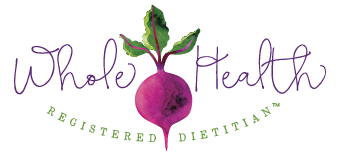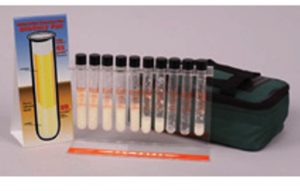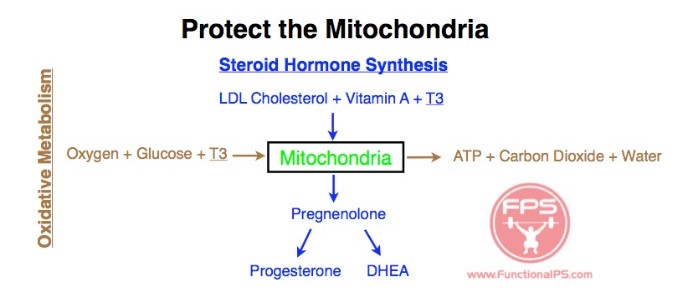Sugar still seems to be everyone’s favorite boogeyman, so I thought with January and “diet season” coming up, I’d put together a quick post with my thoughts on the topic.
But first, fans of the movie The Princess Bride should get a kick out of my favorite meme of all time:
There is a lot of confusion and misinformation out there about sugar. When you say the word sugar to just about anyone, they envision the white granulated stuff. I see even other registered dietitians, who are arguably well-educated in food science, posting blog recipes that contain honey as being “sugar free.”
It makes me want to pull my hair out!
Let’s go over some basic food science, shall we?
Carbohydrates ALL contain sugar and can be divided into three categories:
The first two are molecularly “smaller”, and commonly referred to as “sugars” or “simple carbohydrates”:
1. MONOSACCHARIDES (single sugars): glucose (aka blood-sugar), fructose, and galactose.
2. DISACCHARIDES (contain two sugars bonded): sucrose (glucose + fructose) and lactose (glucose + galactose) are examples.
The third category are carbohydrates that are larger, and commonly referred to as “complex carbohydrates”:
3. POLYSACCHARIDES (contain many glucose molecules bonded): starch and cellulose (an insoluble fiber) are examples.
Disaccharides and polysaccharides cannot be directly used by the body and must be broken down into monosaccharides. The body helps out with the breakdown of disaccharides by producing enzymes like sucrase and lactase, and produces amylase to help breakdown starch. Unlike cows and other ruminants, humans do not produce cellulase, so we are incapable of breaking down cellulose.
That means pretty much any carb you eat that is not cellulose, is broken down into SIMPLE SUGAR.
^^^^Re-read this several times and drill it into your head so you can giggle when celebrities and bloggers go on “sugar free” diets.
So what exactly IS the much-maligned white granulated stuff? It’s merely sucrose, a disaccharide containing both glucose and fructose. Sucrose, the white granulated stuff, is also found in ripe fruit, root vegetables, and honey.
When sugar cane or sugar beets are refined by humans into the white granulated stuff, all that is left is the pure sucrose, without any of the nutrients from the plant. I’ll be referring to this product as white table sugar from here on out. It’s not a great food – it has absolutely no nutritive value other than carbohydrates – but it’s NOT THE BOOGEYMAN. It can be used wisely in the context of a nutrient-dense diet.
How did we get into this mess where people are afraid to eat fruit and where white table sugar is being compared to cocaine?
When sugar fear-mongers criticize white table sugar, you’ll see the products they’re criticizing often contain far more than just white table sugar.
Donuts: Enriched white flour, industrial oils, and sugar.
Cookies: Enriched white flour, industrial oils, and sugar.
Cake: Enriched white flour, industrial oils, and sugar.
Processed foods in general: Enriched white flour, industrial oils, and sugar.
Is sugar really the problem here?
When you read about people going “sugar free” and seeing such miraculous changes in their health, here’s what’s happening:
A.) They’re eating better. They’ve cut out all those processed foods that contain sugar, but that also contain industrial oils that can be inflammatory, and enriched white flour (starch), which can also be inflammatory. If they’re eating more whole foods, they’re likely getting a ton more micronutrients (vitamins and minerals) as well.
AND/OR
B.) They’ve gone too low carb and their body has responded by increasing stress hormones like adrenaline and cortisol. The human body is super smart. Cells need sugar (glucose) so badly, that the body has mechanisms to get it when times are tough, or when humans try something silly like purposefully going low carb. It’s called gluconeogenesis – your body will break down your own tissues (muscles, glands, skin, etc.) to produce sugar. This is a stressful, inefficient way of getting sugar into your cells to create energy.
But you know what? It feels good! Stress hormones like adrenaline and cortisol are meant to be used in emergencies. They pull blood sugar up, create instant energy, clear airways, and are anti-inflammatory. Think about Epi-pens, cortisone shots and cream, and prednisone. They’re all in the same class of hormones as adrenaline and cortisol (glucocorticoids). They make you feel better. But, even your doctor will tell you, you’re not supposed to stay on glucocorticoids long-term because of the adverse side effects.
So you go off sugar/carbs and your joints feel better, achiness goes away, allergies and rashes go away – but at what cost?
Your immune system tanks, you lose muscle and cartilage (increasing your risk of injury), and your skin starts to look like you’ve aged 10 years.
What’s the alternative? Go back to feeling like crap?
No. Teach your body how to properly deal with sugar and other carbohydrates.
I work with clients to improve their sugar (glucose) metabolism. Specifically, how to improve their liver’s ability to store glucose and improve their cellular uptake of glucose.
Want some quick, free advice? Eat more potassium-rich carbohydrates and eat at least 80g protein and a day. And DO NOT think of sugar free and low carb diets as a solution, because they’re not. They’re just a Band-Aid covering up a problem.
Want to learn more more about what I do? Schedule a free call HERE.






